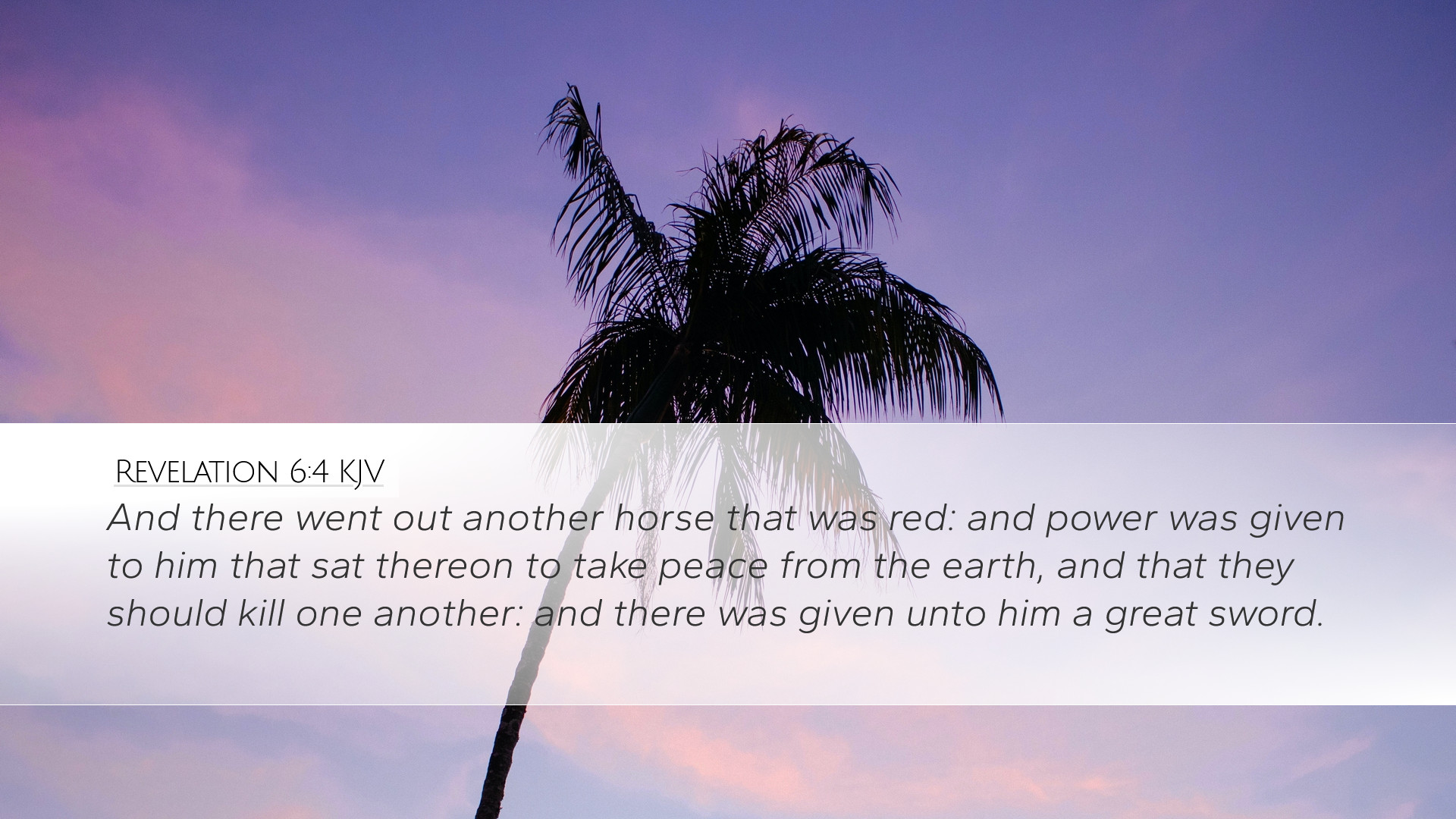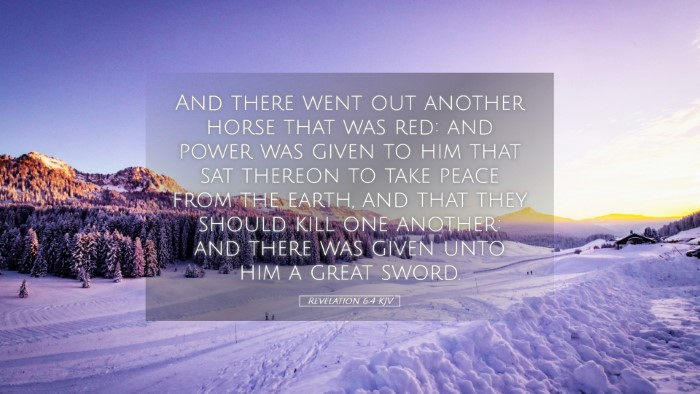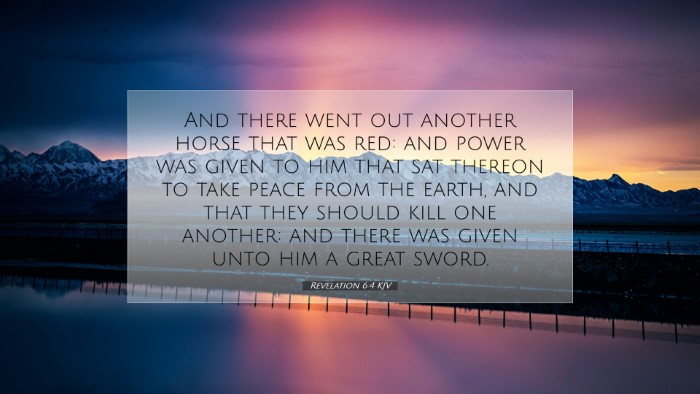Commentary on Revelation 6:4
Verse Text: "And there went out another horse that was red: and power was given to him that sat thereon to take peace from the earth, and that they should kill one another: and there was given unto him a great sword."
Introduction
The Book of Revelation is a profound and complex text that addresses both the suffering and the ultimate victory of God's people. Revelation 6:4 depicts a critical moment in the unveiling of the future, representing the consequences of humanity's sin and the unfolding of God's judgment through the breaking of seals. This commentary seeks to explore the rich insights provided by public domain sources to aid pastors, students, theologians, and biblical scholars in understanding this pivotal verse.
Contextual Background
The context of Revelation is vital for interpreting this passage. Prior to Revelation 6:4, John, the author of Revelation, has introduced the vision of the exalted Christ and the opening of the seals which reveal the events that will transpire during the last days. The seals represent various judgments and conditions that will be present in the world, each unveiling critical aspects of human existence and the divine response.
Exegesis of Revelation 6:4
Symbol of the Red Horse
Matthew Henry references the red horse as a symbol of war and bloodshed. The imagery of the color red often signifies violence and conflict throughout scripture. In this case, the red horse represents the turmoil that will ensue as nations rise against one another, echoing the prophecies found in Matthew 24:6-7 where Jesus foretold that there would be wars and rumors of wars.
The Rider's Authority
Albert Barnes emphasizes that "power was given to him that sat thereon" shows that this violence is not merely chaotic; rather, it is under divine permission. The rider of the red horse, unlike the others, actively takes peace away from the earth. This indicates that God, in His sovereignty, allows such events to unfold as part of His overarching plan to refine and purify His people, leading to eventual restoration.
Consequences of War
The phrase "that they should kill one another" highlights the devastating impact of conflict. Adam Clarke provides insights into the reciprocal nature of violence; it breeds further violence, suggesting a downward spiral in human behavior when peace is absent. This reinforces the biblical principle of human depravity, illustrating the need for redemption and reconciliation through Christ.
The Great Sword
The "great sword" symbolizes the means by which this conflict is executed. In the context of Revelation, this sword can be interpreted as a metaphor for judgment and destruction. Matthew Henry explains that this sword is given to the rider to execute judgment, signifying that the conflict serves a divine purpose in purging evil and preparing for the return of Christ. The sword also connotes authority, implying that even in chaos, God's providence is at work.
Theological Implications
Divine Sovereignty and Human Agency
This verse starkly presents the interplay between divine sovereignty and human agency. God permits the chaos of war and strife, utilizing it to achieve His eternal purposes. This duality leads to critical theological reflections on God’s governance of the world amidst human decisions, reinforcing the doctrine that God ultimately remains in control, even when circumstances appear dire.
Hope Amidst Judgment
The depiction of the red horse and its rider serves as a sobering reminder of the realities of sin and its consequences. However, it also heralds hope. The unfolding judgment is not the final word; rather, it leads to the ultimate establishment of God's kingdom on earth. The faithful can take solace in the assurance that these events serve God's purposes, pointing toward a future where peace will be restored.
Pastoral Applications
For pastors and church leaders, Revelation 6:4 can be a rich passage for preaching and teaching about the realities of suffering and conflict in the world. Pastors are encouraged to emphasize the need for prayer and communal support in times of turmoil. In addition, this verse can be used to highlight the call to be peacemakers (Matthew 5:9) and to live out the Gospel amidst adversity.
Conclusion
Revelation 6:4 encompasses a profound theological narrative expressing the inextricable link between human sin, divine judgment, and the ultimate assurance of God's sovereignty. Through the lens of war and conflict as depicted by the red horse, we are reminded of the brokenness in our world yet are called to live in the hope of redemption and restoration through Christ. It is essential to approach this text with reverence and a desire to glean understanding that spurs the faithful to live righteously in anticipation of the coming Kingdom.


